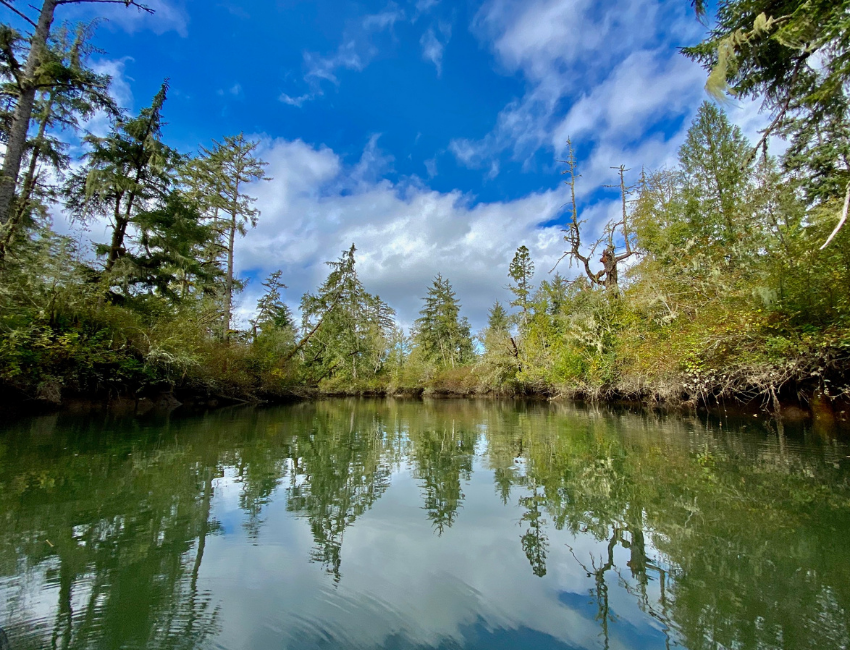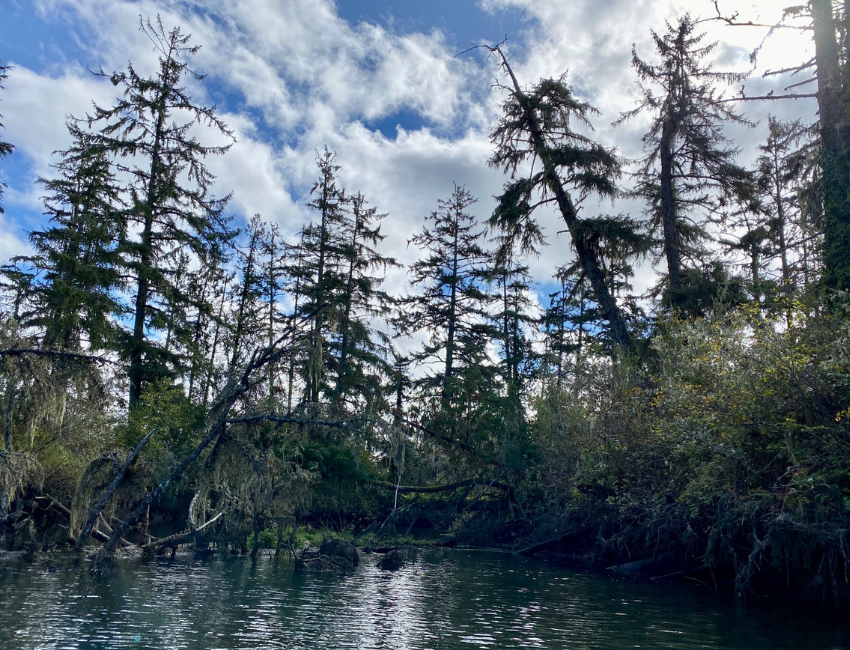
In Tommy Larson’s opinion, “When we go out in nature, we’re going into the real world.”
The naturalist photographer, who moved to the area in 2012 and goes by G.T. Larson professionally, takes as many opportunities as he can to venture into the real world, exploring scenic areas and preserving a bit of their essence with his camera. One of his adventures this fall took him to North Coast Land Conservancy’s Blind Slough Swamp in search of mature forest, and he captured these beautiful photographs.
Tommy’s affinity for reveling in the diverse beauty of nature started during his childhood in Houston, when his family would visit relatives living out in the countryside. During his time in the U.S. Navy, Tommy and a good friend, who shared his passion for the natural environment, embraced opportunities to go hiking and backpacking across Europe. Even now, living in different states, they share photos and videos back and forth of their individual excursions.
“I got into photography because I liked the aesthetics of it, the art of it,” Tommy says, referencing renowned painters like Leonardo da Vinci and Rembrandt Harmenszoon van Rijn as having the greatest influence on his style. As for his preferred subject matter: “I specialize in photographing things above the earth, on the earth, below the earth and out in space.”

When it comes to photographing natural environments, plants and animals, he feels it’s crucial you have “respect for the subject.” For example, he recollects an incident years ago, when he and a friend came upon a massive flock of geese who were nestled on the ground for the evening. His friend ran at them, causing the flock to take off into the sky.
“He thought it was the greatest thing, and I was just in shock,” Tommy recalls. Although the action succeeded in creating a stunning spectacle, he says, “Nature is not supposed to be stressed, just for our own enjoyment. That was not respecting the subject.”
Lately, Tommy has been drawn to exploring and experiencing old-growth forests. He acknowledges “a big tree doesn’t make it better or more valuable.
“A little sapling is wonderful,” he adds. “It’s not volume or size or beauty. It’s just the point of it being.”
Even so, he can’t help feeling awestruck by the overwhelming allure of mature coast redwoods, Sitka spruce and other trees that achieve impressive mass over time.

Tommy doesn’t perceive nature as a consumable product—something you simply go to look at for a few hours, like an animal in a zoo, before returning to your “real life.” Humans are integrally connected to their surrounding environment, and nature unmarred or unmodified exemplifies the world as it should be.
“Nature speaks to our senses unceasingly,” he says. The problem is that people are typically too distracted to notice. “There’s just a disconnect … Nature is speaking to us all the time. Just listen.”
It’s not even important, he adds, that people can correctly identify every plant, every animal, every geological phenomenon, or every landscape they encounter when taking time to simply experience and exist in a natural environment.
“Sometimes we wear that knowledge as a badge of honor,” he said. “It may not be as important to know what something is, as it is to know that something is.”
Comments